Are Moths Eating Your Clothes?
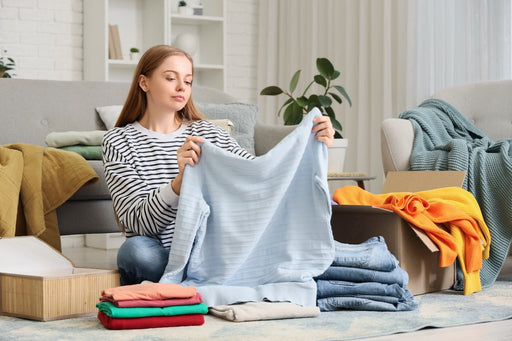
What Clothes Moths Really Eat
Understanding what moths eat isn’t just interesting, it’s essential. When you know what attracts moths, you can take the right steps to keep them away from your clothes, carpets, and soft furnishings.
Clothes Moths themselves don’t eat anything, it’s their larvae that cause all the damage. Once eggs are laid on suitable fabrics, the larvae hatch and begin feeding on keratin, a fibrous protein found in natural animal-based materials. Some of their favourite targets include wool, silk, cashmere, mohair, fur, and feathers - the kinds of fibres often found in high-quality garments and home textiles.
That’s why the damage often shows up on your most delicate or luxurious pieces, not because the moths prefer expensive items, but because those materials contain the food their larvae need to survive.
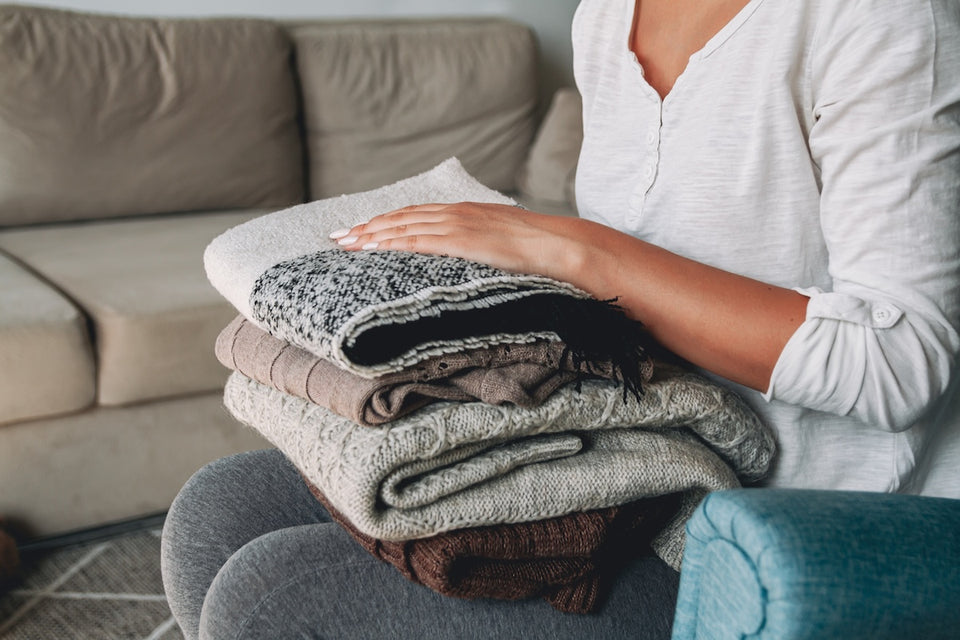
But it’s not just the material that attracts them. Clothes Moth Larvae will also eat soiled fabrics. Traces of body oils, perspiration, food stains, and even hair or skin cells can make an item far more appealing. These organic residues make the keratin easier to digest and help Clothes Moths identify suitable spots to lay their eggs.
Do Moths Eat Cotton or Synthetic Fabrics?
In general Clothes Moth Larvae do not eat cotton, polyester, acrylic, or other plant-based or synthetic fibres. These materials don’t contain keratin, the essential protein the larvae need to grow, so they’re simply not a viable food source. However, that doesn’t mean cotton or synthetic garments are always safe.
Problems arise when these fabrics are blended with animal-based fibres, such as a wool-cotton mix, or if the items have been worn and not properly cleaned before storage. Body oils, perspiration, food stains, and even pet hair can all provide enough organic material to attract moths. These residues can encourage female moths to lay eggs, especially in dark, undisturbed storage spaces where larvae can feed unnoticed.
Even a 100% cotton t-shirt or a synthetic blend can become vulnerable if it’s soiled and stored in the wrong conditions. That’s why it’s essential to wash all garments, regardless of fibre type, before putting them away for the season. Clean storage, good airflow, and early detection are the best ways to prevent an infestation, even in pieces you wouldn’t normally consider at risk.
Adult Moths vs. Larvae: Who’s Doing the Damage?
Here’s the most important point: adult clothes moths don’t eat at all. Their sole purpose is to find a mate and lay eggs in a safe, food-rich environment. It’s the larvae, which hatch between 4 - 10 days later, that do the real damage. These larvae can feed for several weeks, or even months, depending on temperature and conditions.
This is why traps are so effective. Clothes Moth Traps use natural pheromones to attract and catch adult male moths, interrupting the breeding cycle before the eggs can be laid. No eggs means no larvae and no damage.
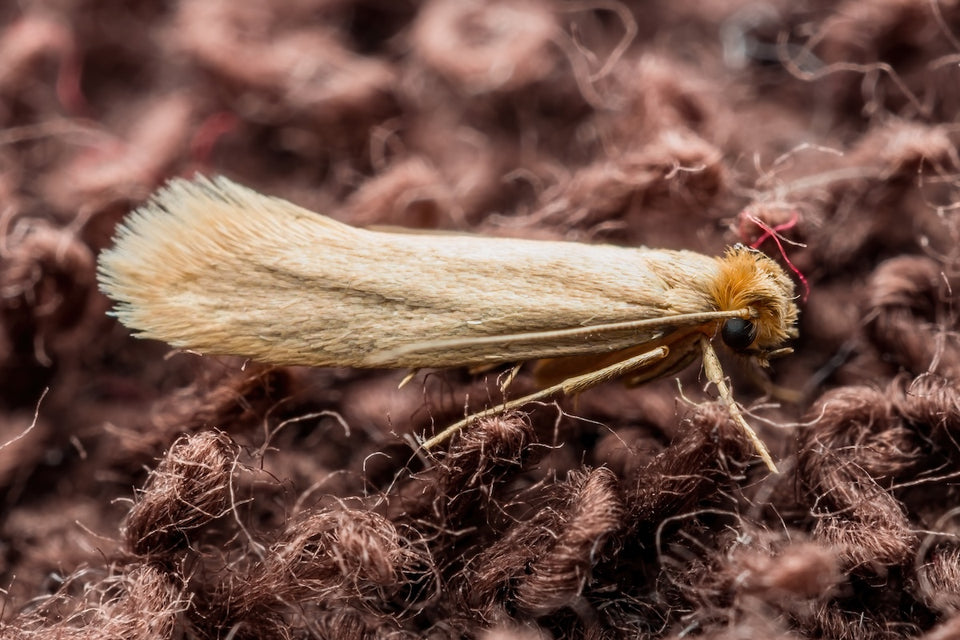
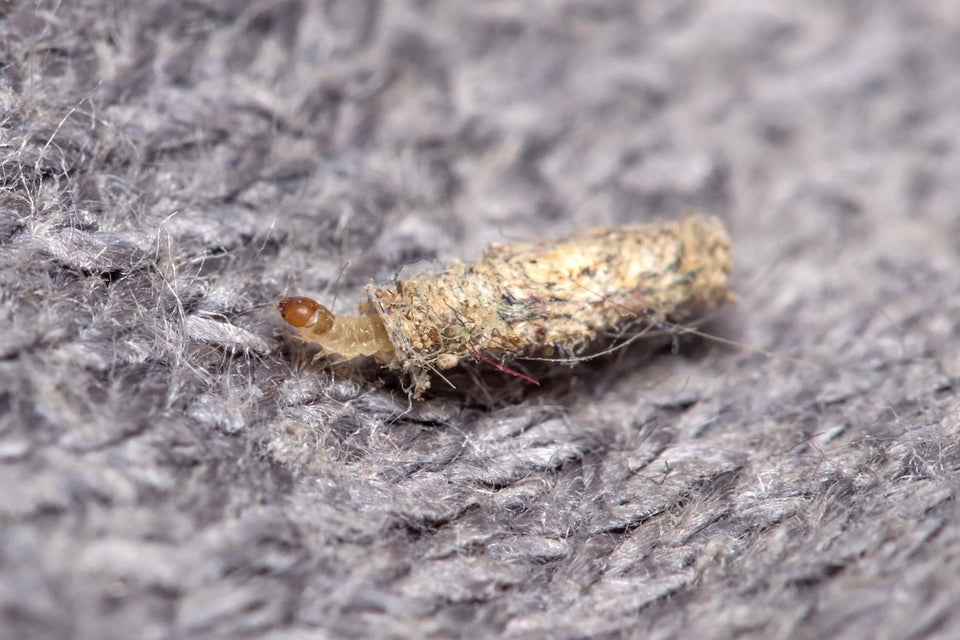
What Else Can Attract Clothes Moths?
In addition to clothing, larvae will also feed on:
- Upholstered furniture (especially wool blends or feather filling)
- Wool or silk rugs and carpets
- Soft toys or pillows filled with feathers
- Stored fabrics, knitting yarns, or sewing boxes
- Old taxidermy or even felted decorations
Anywhere keratin is present, and anywhere that’s dark, warm, and undisturbed, Clothes Moths may find a home.
How to Stop Clothes Moths from Eating Your Clothes
Knowing what moths eat makes it easier to protect your space. Here are the most effective strategies:
1. Clean before storing.
Moths are attracted to scent and residue. Always wash or dry clean garments before storing them for a season — especially wool, cashmere, and silk.
2. Use breathable storage.
Avoid plastic, which can trap moisture. Use cotton storage bags that allow airflow while keeping moths out.
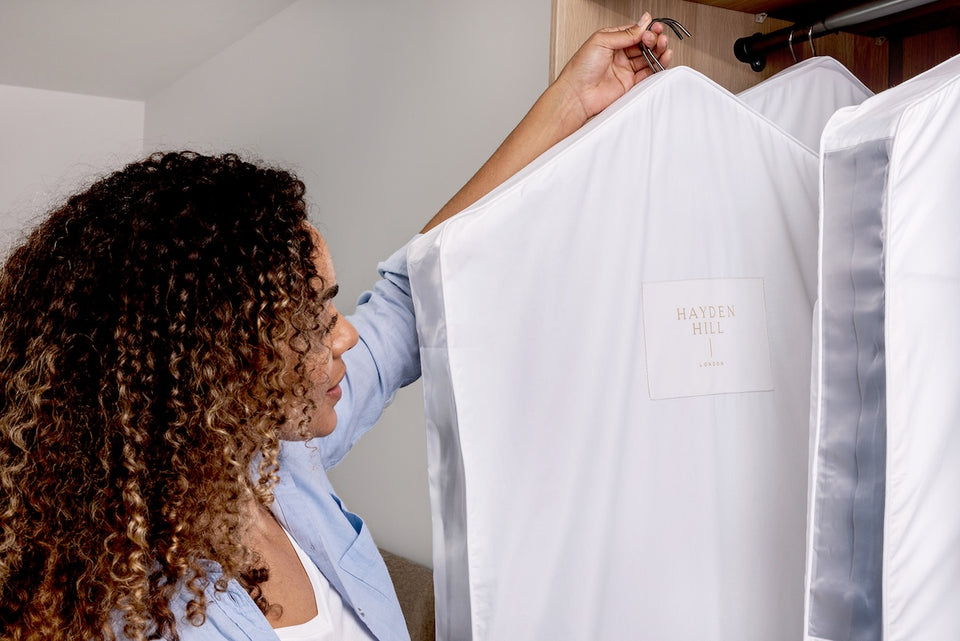
3. Monitor with traps.
Place pheromone Moth Traps in your wardrobe and under furniture to catch adult males. These are critical for spotting early activity and breaking the cycle.
4. Vacuum regularly.
Especially in corners, under furniture, behind drapes, and around wardrobes. Moth eggs can fall to the floor and hatch in unexpected places.
5. Don’t store anything long-term if it’s unwashed.
Even scarves or jackets you’ve only worn once can attract larvae if they’re stored with body oils or food particles.
Final Thought: Think Like a Moth Larva!
If you’re wondering whether something might be vulnerable to moths, ask yourself: Is it made of natural animal-based fibres? Has it been worn or used? Is it sitting somewhere dark and undisturbed?
That’s where moths will go, and that’s where you need to be proactive.
At MothPrevention, we’ve helped over 250,000 customers protect their wardrobes and homes from damaging infestations. If you’ve seen signs of moths, or just want peace of mind, explore our expert-recommended Clothes Moth Traps and wardrobe protection tools.
Stop moths before they cause damage, and keep your clothes exactly how you left them.
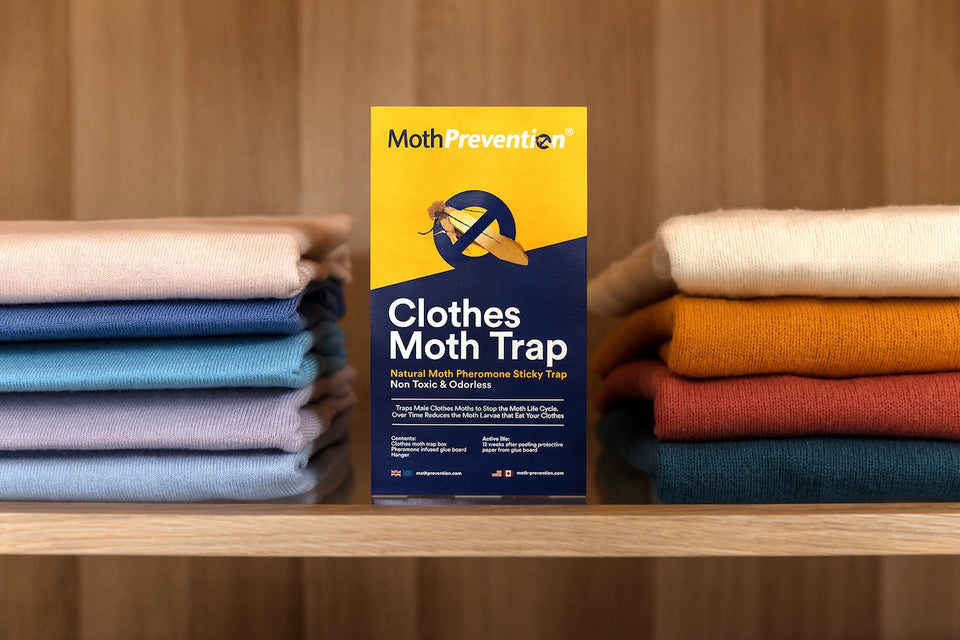
About MothPrevention
MothPrevention® speak to customers every day about their clothes moth issues - clothes moths are a species that are ever increasing and that can cause significant damage to clothes, carpets and other home textiles.
To date, we’ve helped over 250,000 customers deal with their moth problems. We have developed professional grade solutions including proprietary pheromones and trap design engineered to the highest production standards.





